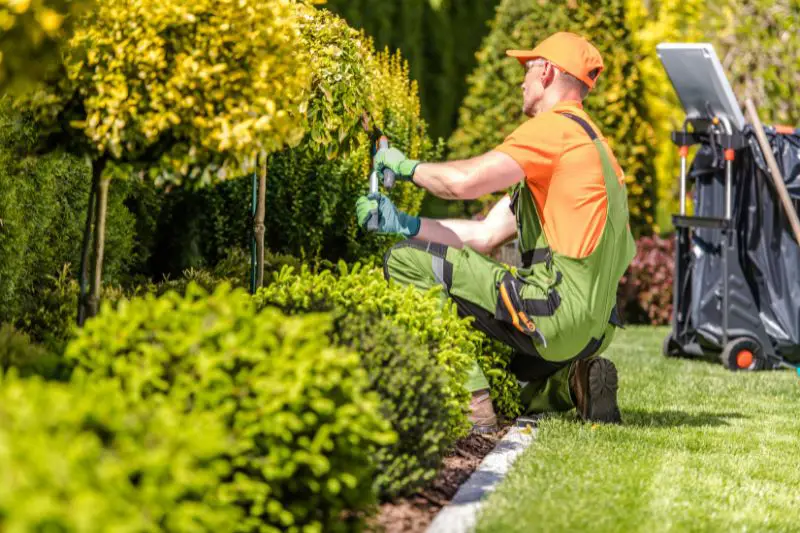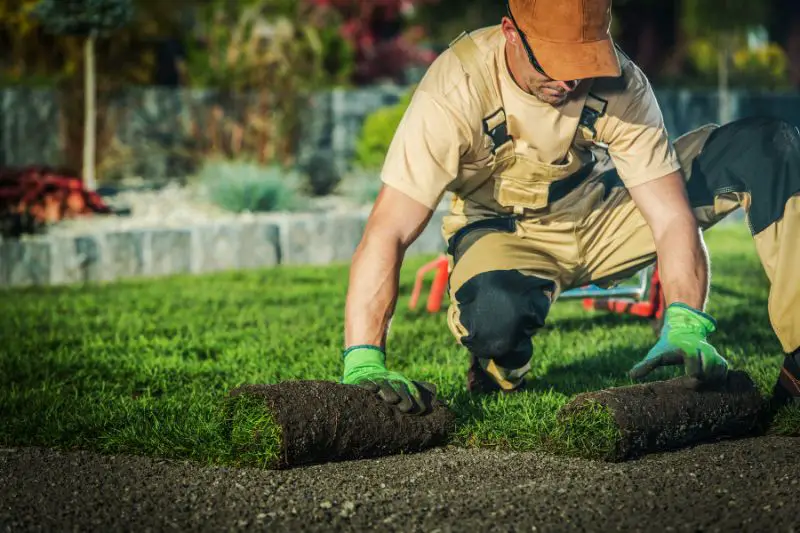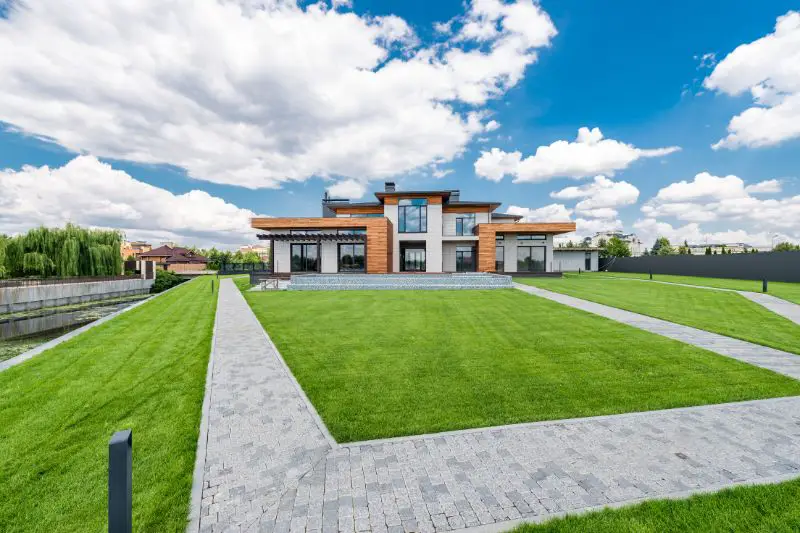
Have you ever wondered why some landscaping businesses thrive while others struggle to attract the right customers? The secret isn’t just in the quality of service—it’s in knowing exactly who to serve.
Identifying your target market is one of the most crucial steps in growing a successful landscaping business. Whether you’re catering to homeowners looking for backyard transformations, real estate professionals boosting curb appeal, or businesses needing professional upkeep, understanding your ideal customer can mean the difference between a thriving company and wasted marketing efforts.
In this guide, we’ll break down the key factors that define a landscaping target market, explore different customer segments, and reveal the most effective strategies to reach them. By the end, you’ll have a clear roadmap to attract the right clients and grow your landscaping business with confidence. Let’s dive in!
What Is a Target Market in Landscaping?

Understanding your target market is the foundation of a successful landscaping business. Without a clear grasp of who your ideal clients are, you risk wasting time and resources on marketing efforts that don’t yield results. Let’s break down what a target market is and why it matters for your landscaping company.
Defining a Target Market
A target market is a specific group of potential customers who are most likely to need and invest in your landscaping services. These are the individuals or businesses whose needs align with what you offer, making them the ideal audience for your marketing efforts.
For example, if you specialize in high-end landscape design, your target market might include luxury homeowners, real estate developers, and high-end resorts. On the other hand, if your focus is on commercial property maintenance, your audience could consist of office complexes, retail centers, and homeowner associations (HOAs).
Why Identifying a Target Market Matters
Failing to define a target market can result in ineffective marketing, wasted resources, and missed business opportunities. Here’s why having a clear target market is essential:
- More Effective Marketing – When you know your audience, you can tailor your messaging, promotions, and advertising efforts to speak directly to their needs and preferences.
- Higher Conversion Rates – Reaching the right audience means you’re more likely to turn potential leads into paying customers.
- Better Use of Resources – Instead of spreading marketing efforts too thin, you can focus on channels that deliver the best results.
- Increased Customer Satisfaction – When your services align with client expectations, you build long-term relationships and generate positive word-of-mouth referrals.
The Difference Between a Niche and a Target Market
While they are related, a niche and a target market are not the same. A target market is the broad audience that needs your services, while a niche is a specialized segment within that market.
For instance, if your target market is residential homeowners, your niche could be sustainable landscaping, drought-resistant gardens, or luxury outdoor living spaces. Identifying a niche can help differentiate your business and establish you as an expert in a specific area.
Key Factors in Defining Your Landscaping Target Market

To attract the right customers, you need to understand what defines your ideal clients. A well-defined target market is shaped by several key factors, including demographics, location, lifestyle preferences, and property types. By analyzing these elements, you can refine your marketing strategy and focus on the most profitable opportunities.
Demographics: Who Are Your Customers?
Demographics play a crucial role in identifying your target market. These characteristics help you understand who is most likely to need and afford your services. Key demographic factors to consider include:
- Age – Older homeowners may prioritize low-maintenance landscapes, while younger families might be interested in functional outdoor spaces for children.
- Income Level – High-income clients may seek premium landscaping services, while middle-income homeowners often look for cost-effective solutions.
- Homeownership Status – Homeowners are more likely to invest in landscaping compared to renters, who have limited control over property improvements.
- Occupation – Professionals with demanding careers may prefer full-service landscaping, while retirees may be more hands-on with their yards.
Geographic Factors: Where Are Your Clients Located?
Your landscaping business’s success is heavily influenced by location. The geographic area you serve determines the types of landscapes, plant selections, and services in demand. Consider these factors:
- Climate and Weather Conditions – Warm climates may require drought-resistant landscaping, while colder regions need snow-resistant plants and seasonal maintenance.
- Urban vs. Suburban vs. Rural – Urban clients often require compact, space-efficient designs, while suburban homeowners may seek expansive lawns and garden features.
- Local Regulations – Some areas have strict water usage restrictions or homeowner association (HOA) guidelines that affect landscaping choices.
Psychographics: What Do Your Clients Value?
Beyond demographics and location, understanding the attitudes, interests, and lifestyles of your clients allows you to tailor your services more effectively. Consider these psychographic insights:
- Sustainability Preferences – Many homeowners and businesses are prioritizing eco-friendly landscaping, such as native plants, permeable paving, and smart irrigation systems.
- Aesthetic Preferences – Some clients prefer modern, minimalist designs, while others seek lush, traditional gardens.
- Outdoor Lifestyle Needs – Families may want child-friendly play areas, while frequent entertainers may prioritize outdoor kitchens and patios.
Property Types: Who Owns the Spaces You Service?
The type of property your clients own influences the scope of landscaping work required. Each category presents different opportunities:
- Residential Properties – Single-family homes, luxury estates, and townhouses all have unique landscaping needs, from basic lawn care to high-end outdoor living designs.
- Commercial Properties – Office buildings, shopping centers, and hotels require professional landscaping to enhance curb appeal and create welcoming environments.
- Industrial Properties – Factories and warehouses may need functional landscaping for erosion control, security, or aesthetic enhancement.
- Municipal and Public Spaces – Parks, schools, and government buildings often have strict maintenance requirements and long-term contracts.
Different Types of Landscaping Clients

Not all landscaping clients are the same. Each group has distinct needs, budgets, and expectations. By understanding the different types of customers in the landscaping industry, you can tailor your services, pricing, and marketing to attract the right clients and maximize profitability. Below, we’ll explore the main categories of landscaping clients, their unique requirements, and the best strategies for reaching them.
Homeowners: The Largest Market Segment
Residential homeowners form the backbone of the landscaping industry, with demand ranging from basic lawn care to elaborate outdoor living spaces. The residential landscaping market in the U.S. alone is valued at over $100 billion, highlighting its vast potential.
Different Types of Homeowners
- Budget-conscious homeowners – These clients typically seek essential services like lawn mowing, seasonal maintenance, and cost-effective improvements such as mulching or flower bed installations. They often compare prices and prioritize affordability.
- Luxury homeowners – High-income clients demand premium services such as custom-designed gardens, water features, outdoor kitchens, and landscape lighting. They are willing to invest in quality craftsmanship and long-term upkeep.
- New homeowners – Those who recently purchased a home may require initial landscaping to enhance curb appeal or correct neglected outdoor spaces. They may need guidance on plant selection and long-term maintenance.
- DIY enthusiasts – Some homeowners enjoy gardening and minor landscaping projects but hire professionals for specialized work like irrigation installation, tree care, or hardscaping.
How to Market to Homeowners
- Local SEO and Google My Business optimization – Homeowners often search online for landscaping services, making it essential to appear in local search results.
- Seasonal promotions and maintenance packages – Offering bundled services for spring cleanup, summer lawn care, and fall leaf removal can attract recurring clients.
- Referral programs and community engagement – Satisfied homeowners are likely to recommend your services to neighbors, so encouraging referrals can drive more business.
Real Estate Professionals: Boosting Curb Appeal
Realtors, property managers, and developers frequently invest in landscaping to enhance property value and attract buyers or tenants. Landscaping improvements can increase a home’s value by as much as 12%, making it a priority for those in the real estate industry.
Different Types of Real Estate Clients
- Realtors and home sellers – Landscaping plays a key role in curb appeal, which directly influences a property’s first impression. Simple upgrades such as fresh sod, flower beds, and trimmed shrubs can help sell homes faster.
- Property managers – Rental communities, apartment complexes, and homeowner associations (HOAs) require ongoing landscaping maintenance to keep common areas attractive and functional.
- Developers and builders – New construction projects often need landscape design and installation to create visually appealing communities. Developers may seek drought-resistant plants, erosion control, and sustainable designs.
How to Market to Real Estate Professionals
- Networking with local realtors and builders – Establishing relationships with real estate agents and developers can lead to consistent business.
- Quick turnaround services – Real estate professionals often need fast, high-impact landscaping improvements before listings hit the market.
- Before-and-after case studies – Showcasing successful landscaping transformations can build credibility and attract new clients.
Businesses and Commercial Spaces: Professional Image Matters
Commercial properties rely on landscaping to create a polished, inviting atmosphere. A well-maintained landscape not only enhances curb appeal but also contributes to brand perception and customer experience.
Different Types of Commercial Clients
- Office buildings and corporate campuses – Businesses use professional landscaping to enhance their brand image and provide pleasant outdoor spaces for employees.
- Retail centers and restaurants – Shopping centers and dining establishments benefit from attractive landscapes that draw in customers and encourage longer visits.
- Hotels and resorts – Hospitality businesses require premium landscaping to create lush, luxurious outdoor spaces that enhance guest experiences.
How to Market to Commercial Clients
- Highlight ROI benefits – Demonstrate how professional landscaping can attract customers, increase property value, and enhance employee satisfaction.
- Offer maintenance contracts – Many commercial properties require ongoing landscaping care, making long-term service agreements a valuable revenue stream.
- Leverage LinkedIn and professional networking – Connecting with property managers, business owners, and corporate executives can generate leads.
Municipalities and Public Spaces: Large-Scale Projects
Local governments, schools, and public agencies invest in landscaping for beautification, environmental conservation, and safety. These projects often involve competitive bidding processes and long-term contracts.
Different Types of Municipal and Public Clients
- City parks and recreational spaces – Public areas require sustainable landscaping, tree maintenance, playground installations, and erosion control.
- Schools and universities – Educational institutions seek safe, low-maintenance landscapes that enhance campus aesthetics while being budget-friendly.
- Government buildings and streetscapes – Municipal projects often prioritize cost-efficient, durable, and environmentally friendly landscaping solutions.
How to Market to Municipalities and Public Clients
- Understand the bidding process – Many municipal projects require formal proposals and competitive bidding. Building experience and a strong portfolio can improve your chances of securing contracts.
- Emphasize sustainability – Governments often prioritize eco-friendly landscaping practices such as native plantings, rain gardens, and smart irrigation systems.
- Develop strong partnerships – Working with local contractors, architects, and government agencies can lead to more opportunities.
High-End and Specialty Clients: Niche Markets with High ROI
Some clients seek highly customized landscaping solutions that go beyond traditional lawn care and maintenance. These high-value markets demand expertise and specialized design work.
Different Types of High-End and Specialty Clients
- Luxury estates and celebrity homes – High-profile clients invest in elaborate gardens, outdoor entertainment areas, custom hardscaping, and exotic plant installations.
- Golf courses and sports facilities – Turf management, irrigation systems, and precision landscaping are essential for maintaining athletic fields.
- Sustainable and eco-conscious clients – Demand for green landscaping is rising, with clients prioritizing xeriscaping, native plant installations, and low-water landscaping.
How to Market to High-End Clients
- Showcase high-quality work – A strong portfolio with detailed photos, testimonials, and case studies is crucial for attracting luxury clients.
- Build a premium brand – High-end customers expect professionalism, exclusivity, and exceptional service. A refined brand image can help position your company as a top-tier provider.
- Leverage referrals and word-of-mouth – Many high-end clients rely on recommendations from architects, designers, and other luxury service providers.
How to Conduct Market Research for Your Landscaping Business

Understanding your target market is essential for growing a successful landscaping business. Market research helps you identify potential clients, understand their needs, and position your services effectively. By gathering and analyzing data, you can make informed business decisions, refine your marketing efforts, and stay ahead of competitors.
Identify Your Ideal Client Profile
Before conducting market research, define who your ideal clients are. Consider key factors such as:
- Demographics – Age, income level, homeownership status, and occupation
- Geographic location – Climate, urban vs. suburban areas, and property sizes
- Psychographics – Lifestyle preferences, aesthetic tastes, and sustainability concerns
- Property type – Residential, commercial, municipal, or specialty landscaping needs
By clarifying your ideal customer profile, you can focus your research on the most relevant market segments.
Analyze Local Market Demand
Understanding local demand is crucial for identifying profitable opportunities. Conduct research to determine:
- Population growth trends – Expanding neighborhoods and new housing developments create fresh landscaping opportunities.
- Economic conditions – Higher disposable income in an area often leads to increased spending on landscaping services.
- Competitor presence – A high number of competitors may indicate strong demand but can also create challenges in differentiation.
Use resources such as government census data, real estate reports, and industry studies to assess local demand.
Research Your Competitors
Studying your competition helps you understand market gaps and identify ways to stand out. Key aspects to evaluate include:
- Services offered – What types of landscaping services do they provide? Are there any gaps in the market?
- Pricing strategies – How do their pricing models compare to industry averages?
- Marketing tactics – Analyze their websites, social media presence, customer reviews, and promotional efforts.
- Customer satisfaction – Look at online reviews to see what customers appreciate or complain about.
By assessing competitors, you can refine your service offerings and develop a competitive advantage.
Gather Insights from Potential Clients
Direct engagement with potential clients provides valuable insights into their needs and preferences. Consider these methods:
- Customer surveys – Send out surveys to homeowners, businesses, or property managers to understand their landscaping priorities.
- Interviews and focus groups – Speaking directly with potential clients can uncover pain points and service expectations.
- Online forums and social media – Join local community groups and industry discussions to see what landscaping topics are trending.
These insights can guide service development and marketing strategies.
Utilize Digital Tools for Data Collection
Leverage online tools to collect and analyze market data efficiently:
- Google Trends – Identify search trends for landscaping services in your region.
- Keyword research tools – Use platforms like SEMrush or Ahrefs to discover what potential clients are searching for online.
- Social media analytics – Monitor engagement metrics on platforms like Facebook, Instagram, and LinkedIn to gauge audience interests.
Data-driven decisions can help refine your approach and optimize your marketing efforts.
Evaluate Industry Trends and Future Opportunities
Stay ahead of the competition by keeping an eye on emerging landscaping trends:
- Sustainable landscaping – Eco-friendly designs, native plants, and water-efficient irrigation systems are in growing demand.
- Smart technology – Automated irrigation, outdoor lighting, and landscaping apps enhance convenience for clients.
- Outdoor living spaces – Demand for patios, fire pits, and outdoor kitchens continues to rise.
By aligning your business with industry trends, you can position yourself as a forward-thinking landscaping provider.
Conducting thorough market research ensures you understand your target audience, identify competitive advantages, and adapt to changing demands.
Effective Marketing Strategies for Landscaping Businesses

A well-planned marketing strategy helps landscaping businesses attract the right clients, build a strong brand presence, and generate consistent revenue. By combining digital and traditional marketing methods, you can reach potential customers effectively and differentiate yourself from competitors.
Develop a Strong Brand Identity
A strong brand identity makes your landscaping business more recognizable and trustworthy. Consider these key elements:
- Business name and logo – Choose a professional name and logo that reflect your services and values.
- Consistent messaging – Develop a unique value proposition that highlights what sets you apart.
- Professional website – A well-designed, mobile-friendly website with service descriptions, pricing, and contact information builds credibility.
A cohesive brand creates a lasting impression and helps potential clients remember your business.
Optimize Your Online Presence
Most customers search for landscaping services online, making digital marketing essential.
- Search engine optimization (SEO) – Optimize your website for local searches by using relevant keywords, such as “residential landscaping in [your city].”
- Google My Business – Claim your Google listing to appear in local search results and Google Maps.
- Online reviews and testimonials – Encourage satisfied customers to leave positive reviews on Google, Yelp, and social media.
A strong online presence increases visibility and attracts more potential clients.
Utilize Social Media Marketing
Social media platforms help you engage with potential customers and showcase your work.
- Before-and-after project photos – Visual content demonstrates your expertise and builds trust.
- Educational content – Share lawn care tips, seasonal maintenance advice, and landscaping trends.
- Targeted advertising – Use Facebook and Instagram ads to reach homeowners and businesses in your area.
Regular social media activity helps keep your brand top-of-mind for potential clients.
Leverage Local Networking and Partnerships
Building relationships within your community can generate valuable referrals and long-term clients.
- Join business associations – Networking with local business groups and chambers of commerce can lead to partnerships.
- Collaborate with real estate agents and contractors – These professionals often need landscaping services for their clients.
- Attend home and garden expos – Showcasing your services at local events increases brand awareness.
Word-of-mouth referrals remain one of the most effective ways to grow a landscaping business.
Offer Seasonal Promotions and Loyalty Programs
Seasonal marketing campaigns and customer incentives encourage repeat business.
- Discounts for new customers – A limited-time discount can attract first-time clients.
- Seasonal service packages – Bundle services such as spring cleanup, summer lawn care, and fall leaf removal.
- Loyalty rewards – Offer discounts or free services to repeat customers who refer new clients.
These strategies build customer loyalty and encourage long-term relationships.
Invest in Traditional Marketing Methods
While digital marketing is essential, traditional methods still play a role in reaching local clients.
- Direct mail campaigns – Send postcards or flyers to targeted neighborhoods.
- Branded vehicles and signage – A well-branded work truck and lawn signs increase local visibility.
- Local newspaper and radio ads – Advertising in community media can reinforce your brand presence.
Building Long-Term Customer Relationships

Retaining customers is just as important as acquiring new ones. Long-term client relationships create a steady revenue stream, generate referrals, and strengthen your business reputation. Implementing a strong customer retention strategy ensures repeat business and lasting loyalty.
Provide Exceptional Service and Quality
Consistency and quality are the foundation of strong customer relationships. Clients expect reliability and professionalism in every interaction.
- Punctuality and reliability – Arrive on time and complete projects within the agreed timeline.
- Attention to detail – Small touches, such as precise edging or thorough cleanup, leave a lasting impression.
- Use of high-quality materials – Offering durable, premium products ensures long-term satisfaction.
By consistently delivering superior service, you build trust and encourage repeat business.
Communicate Effectively and Proactively
Strong communication fosters a positive customer experience and reduces misunderstandings.
- Set clear expectations – Discuss project details, pricing, and timelines upfront.
- Provide progress updates – For larger projects, keep clients informed about milestones and any changes.
- Follow up after service – A quick check-in shows you care about their satisfaction and opens the door for future work.
Transparent communication builds trust and strengthens relationships over time.
Offer Personalized Recommendations
Clients appreciate customized solutions that address their specific needs and preferences.
- Seasonal service reminders – Inform clients about upcoming maintenance needs, such as aeration or irrigation adjustments.
- Tailored landscaping plans – Suggest enhancements based on their property layout and lifestyle.
- Exclusive offers for loyal customers – Provide special discounts or early access to new services.
Personalization enhances customer satisfaction and encourages repeat business.
Implement a Customer Loyalty Program
Rewarding loyal clients strengthens relationships and incentivizes long-term engagement.
- Referral bonuses – Offer discounts or free services for referring new clients.
- Loyalty discounts – Provide ongoing customers with reduced rates on seasonal packages.
- Membership plans – Introduce subscription-based services, such as monthly lawn care or quarterly landscape inspections.
A structured loyalty program increases customer retention and encourages word-of-mouth referrals.
Seek and Act on Customer Feedback
Listening to customer input helps improve service quality and demonstrates a commitment to excellence.
- Send post-service surveys – Gather insights on customer satisfaction and areas for improvement.
- Address complaints professionally – Resolve issues quickly and turn negative experiences into positive ones.
- Show appreciation for feedback – Thank customers for their suggestions and implement changes where possible.
Acting on feedback enhances your reputation and keeps clients engaged with your business.
Conclusion
Understanding your target market is essential for building a successful landscaping business. By identifying the right customers, tailoring your services to meet their needs, and implementing effective marketing and pricing strategies, you can establish a strong presence in your local market.
Focusing on long-term customer relationships ensures steady growth and repeat business. Providing exceptional service, maintaining clear communication, and offering value-added solutions help build trust and loyalty. A well-rounded approach that combines digital marketing, networking, and customer retention strategies will set your landscaping business apart from the competition.
With a deep understanding of your ideal clients and a strategic approach to service delivery, you can create a thriving landscaping business that continues to grow and evolve over time.
